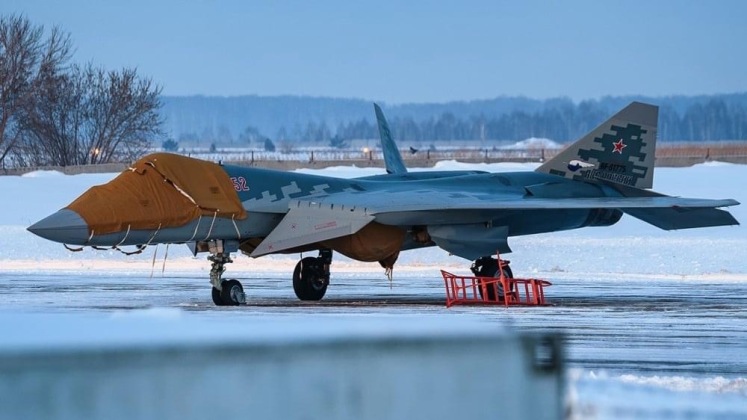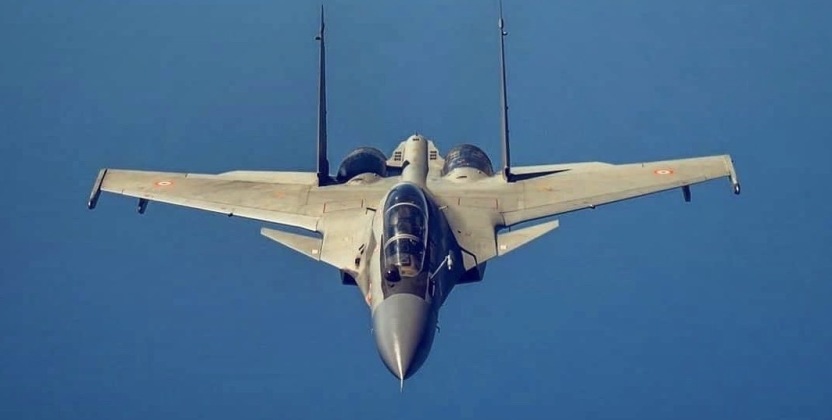News
Russia and India Discussing License Production of Fifth Generation Fighters at Aero India 2023: Su-57 to Follow Su-30MKI’s Path?
Russia and India are discussing opportunities for joint development of fifth generation fighter aircraft at the facilities of Hindustan Aeronautics Limited (HAL), as the South Asian state looks to modernise its fleet with its first post fourth generation combat jets. CEO of the Russian arms export agency Rosoboronexport Alexander Mikheev stated to this effect: “Russia is ready to continue cooperation in this sphere [joint production], including with regards to the fifth generation fighter, and produce new airplanes after inking the contract at HAL’s facilities. This depends on decisions of the Indian side.” He added that “The experience of working on the Su-30MKI airplane together with India has demonstrated that our countries can collaborate in such utterly challenging and high-tech projects as the creation of the production facility for the fourth generation fighter. This aircraft has formed the backbone of the Indian Air Force and has proven itself well in active military duty.”

The Su-30MKI first entered service in 2002, and was at the time widely considered the most capable fighter in the world with capabilities far exceeding those of any fighter class the Russian Air Force would field unit the next decade. The fighter was developed as a variant of the Su-30 design which was very heavily customised to meet Indian requirements, including through integration of a phased array radar and thrust vectoring engines both derived from those of the cancelled Su-37 ‘4++ generation’ air superiority fighter. The precedent set by the Su-30MKI program is expected to be followed should India seek to place larger orders for and license produce an aircraft from the next generation – most likely the Su-30’s direct successor the Su-57 but possibly its less developed lightweight counterpart which has yet to reach prototype stage the S-75 Checkmate.

India and Russia previously pursued joint development of a Su-57 derivative under the FGFA program, although the project was widely criticised for its format. In particular, the fact that technologies were overwhelmingly Russian with India having relatively little to contribute, and the fact that the Su-57 had effectively completed development when the FGFA program began, made a joint program with full technology sharing far from suitable in the eyes of many experts. India’s entry into the program nevertheless indicated a high degree of interest in the Su-57, which with this continuing to be expressed by Indian officials even after the FGFA program was ended. While the possibility remains that India could purchase Su-57s ‘off the shelf,’ as Algeria has reportedly done, it is perhaps more likely that the fighter will be license produced in India with limited technology sharing as the Su-30MKI was before it – with the addition of Indian weapons, a second seat for a weapons systems officer, and other customisation options.

The Su-57 joined the Russian Air Force in 2020, five years behind schedule, although only 10 are currently in service. The program has continued to gain momentum since then, however, with the rate of production fast increasing and expected to reach 14 airframes per year in 2024 – matching current production rates of the Su-30, Su-34 and Su-35. Perhaps most significantly, the fighter has gained a combat record far exceeding that of any other fifth generation fighter class through its deployments against Ukrainian forces since March 2022, including in strike, air defence suppression and possibly in air to air roles. Operational experience against a state adversary, and so soon after service entry, is expected to significantly increase overseas confidence in the Su-57. The fighter is prized for a number of advanced features including its use of sextuple radars, its extreme manoeuvrability, its integration of R-77M missiles with APAA guidance, and its very long engagement range. The fighter effectively represents India’s only option to acquire a post-fourth generation fighter class, as territorial disputes with China rule out acquiring a Chinese alternative, while the American F-35 has extreme conditions attached to its export including strict controls on how it can be used and where it can be based and close American controls over its software – none of which are considered acceptable for India due to its strictly neutral foreign policy.












